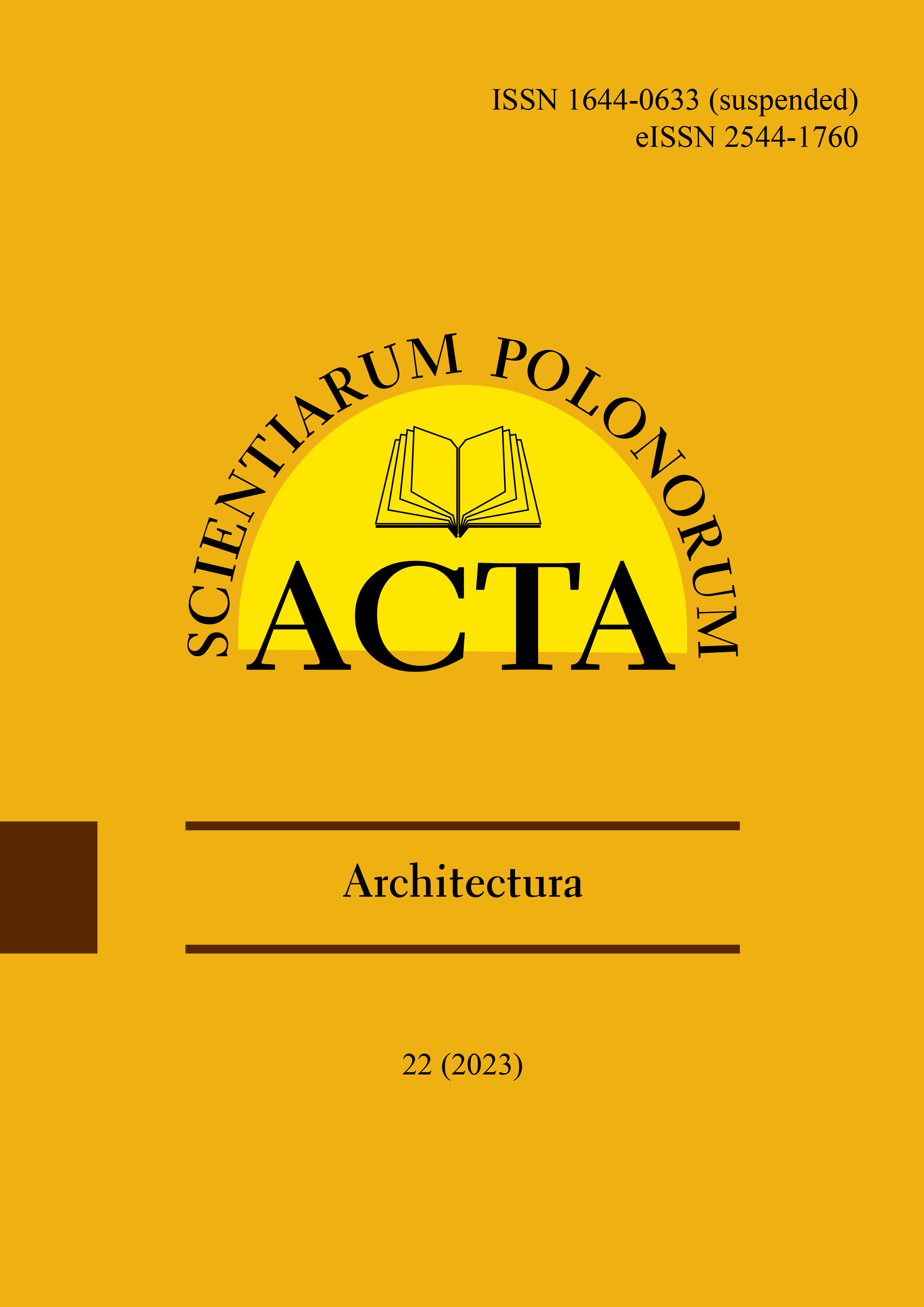Main Article Content
Computational methods enable mathematical discretisation in structural design. Thus, thanks to the algorithmic design, the obtained results matrix presents various structurally efficient load-bearing elements. The main aim of this paper is to address the topic of material optimisation in truss bar structures with different approaches. The paper analyses and compares steel truss optimisation based on two software optimisation algorithms (MS Excel and Ansys Mechanical) using gradient and sub-problem methods. The key findings present how effective each method is in structural optimisation and concludes the present study with a roadmap to efficient structural designing of the load-bearing truss elements.
Article Details
Burchart-Korol, D. (2013). Life cycle assessment of steel production in Poland: a case study. Journal of Cleaner Production, 54, 235–243. (Crossref)
Dillen, W., Lombaert, G. & Schevenels, M. (2021). A hybrid gradient-based/metaheuristic method for Eurocode-compliant size, shape and topology optimisation of steel structures. Engineering Structures, 239, 112137. (Crossref)
Dixit, S. & Stefańska, A. (2022). Bio-logic, a review on the biomimetic application in architectural and structural design. Ain Shams Engineering Journal, 14 (1), 101822. (Crossref)
Haftka, R. & Gürdal, Z. (2012). Elements of structural optimisation (Vol. 11). Springer Science & Business Media.
Kaveh, A. & Zaerreza, A. (2020). Size/layout optimisation of truss structures using shuffled shepherd optimisation method. Periodica Polytechnica Civil Engineering, 64 (2), 408–421. (Crossref)
Kirby, R., Logg, A., Scott, L. R. & Terrel, A. R. (2006). Topological Optimization of the Evaluation of Finite Element Matrices. SIAM Journal on Scientific Computing, 28 (1), 224–240. (Crossref)
Kurcjusz, M., Stefańska, A., Dixit, S. & Starzyk, A. (2022). The interdisciplinary designing in form, function, and structure coherency. Acta Scientiarum Polonorum. Architectura, 3 (21), 3–13. (Crossref)
Liu, J. & Xia, Y. (2022). A hybrid intelligent genetic algorithm for truss optimisation based on deep neutral network. Swarm and Evolutionary Computation, 73, 101120. (Crossref)
Logg, A. (2007). Automating the Finite Element Method. Archives of Computational Methods in Engineering, 14, 93–138. (Crossref)
Łacek, P. & Starzyk, A. (2022). Recycling of building materials: an overview. Acta Scientiarum Polonorum. Architectura, 3 (21), 67–76. (Crossref)
Pomponi, F. & Moncaster, A. (2016). Reducing embodied carbon in the built environment: A research agenda. International Conference on Sustainable Ecological Engineering Design for Society. https://doi.org/10.17863/CAM.7354
Renkavieski, C. & Parpinelli, R. S. (2021). Meta-heuristic algorithms to truss optimisation: Literature mapping and application. Expert Systems with Applications, 182. (Crossref)
Stefańska, A., Kurcjusz, M., Cygan, M., Buczkowska, J., Szmołda, K. & Morawska, P. (2022, January). The Interdisciplinary Approach to Free-Form Canopies Optimisation in Terms of Geometrical and Structural Logic Design. In Proceedings of the 7th International Conference on Architecture, Materials and Construction (pp. 110–119). Cham: Springer. (Crossref)
Stefańska, A. & Rokicki, W. (2022, July). Architectural Design Optimisation in Reticulated Free-Form Canopies. Buildings, 12 (8), 1–16. (Crossref)
Stolpe, M. (2016). Truss optimisation with discrete design variables: a critical review. Structural and Multidisciplinary Optimisation, 53 (2), 349–374. (Crossref)
Vijayan, D. S., Sivasuriyan, A., Parthiban, D., Jakimiuk, A., Bayat, H., Podlasek, A., Vaverková, M. D. & Koda, E. (2022). A Comprehensive Analysis of the Use of SFRC in Structures and Its Current State of Development in the Construction Industry. Materials, 15 (7012), 7012. (Crossref)
Wang, Y., Huang, J., Dong, W. S., Yan, J. C., Tian, C. H. & Mo, W. T. (2013). Two-stage based ensemble optimisation framework for large-scale global optimisation. European Journal of Operational Research, 228 (2), 308–320. (Crossref)
Webster, M. D., Meryman, H., Slivers, A., Rodriguez-Nikl, T., Lemay, L. & Simonen, K. (2012). Structure and carbon – how materials affect the climate. SEI Sustainability Committee, Carbon Working Group. ASCE.
Downloads
- Anna Stefańska, Klaudia Liszewska, Małgorzata Kurcjusz, Katarzyna Jeleniewicz, Rohan Raj Das, GENERATIVE SHAPING IN SEARCH OF MATERIAL AND STRUCTURAL OPTIMISATION OF SMALL STRUCTURAL FORMS , Acta Scientiarum Polonorum. Architectura: Vol. 22 (2023)
- Anna Stefańska, Katarzyna Walasek, Małgorzata Kurcjusz, Barbara Warzecha, Joanna Koszewska, Piotr Niemczak, Contemporary design of sustainable campus spaces: A case study of the extension of the Water Centre at the Warsaw University of Life Sciences – SGGW , Acta Scientiarum Polonorum. Architectura: Vol. 24 (2025)
- Małgorzata Kurcjusz, Rohan Raj Das, Advances in structural engineering through artificial intelligence: methods, challenges and opportunities , Acta Scientiarum Polonorum. Architectura: Vol. 24 (2025)

This work is licensed under a Creative Commons Attribution-NonCommercial 4.0 International License.

